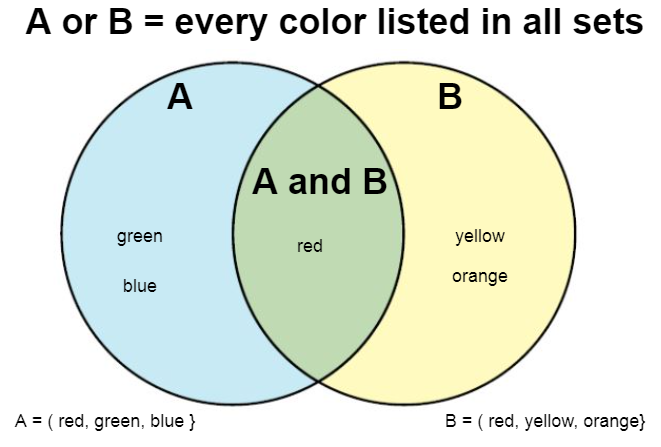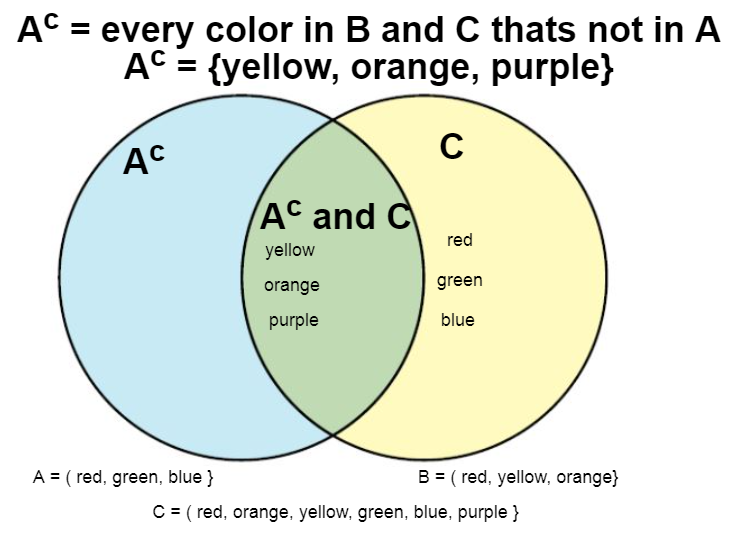3.1.1: Union, Intersection, and Complement
( \newcommand{\kernel}{\mathrm{null}\,}\)
3.1.1 Learning Objectives
-
Find the union and intersection of two sets
-
Find the complement of a set relative to a universal set
-
Use and interpret set notation for unions, intersections and complements of sets
Commonly sets interact. For example, you and a new roommate decide to have a house party, and you both invite your circle of friends. At this party, two sets are being combined, though it might turn out that there are some friends that were in both sets.
Definition: Union, Intersection, and Complement
The union of two sets contains all the elements contained in either set (or both sets). The word that you will often see that indicates a union is "or".
The union is notated
More formally,
The intersection of two sets contains only the elements that are in both sets. The word that you will often see that indicates an intersection is "and".
The intersection is notated
More formally,
The complement of a set A contains everything that is not in the set A.
The complement is notated
Example 1
Consider the sets:
- Find
- Find
- Find
Solution
A Venn diagram can help organize each of these problems.

a) The union contains all the elements in either set:
Notice we only list red once.
b) The intersection contains all the elements in both sets:
c) Here we're looking for all the elements that are not in set

Try it Now 1
Using the sets from the previous example, find
- Answer
-
Notice that in the example above, it would be hard to just ask for
Definition: Universal Set
A universal set is a set that contains all the elements we are interested in. This would have to be defined by the context.
A complement is relative to the universal set, so
Example 2
- If we were discussing searching for books, the universal set might be all the books in the library.
- If we were grouping your Facebook friends, the universal set would be all your Facebook friends.
- If you were working with sets of numbers, the universal set might be all whole numbers, all integers, or all real numbers
Example 3
Suppose the universal set is
As we saw earlier with the expression
Example 4
Suppose
- Find
- Find
- Find
Solution
a) We start with the intersection:
Now we union that result with
b) We start with the union:
Now we intersect that result with
c) We start with the intersection:
Now we want to find the elements of


